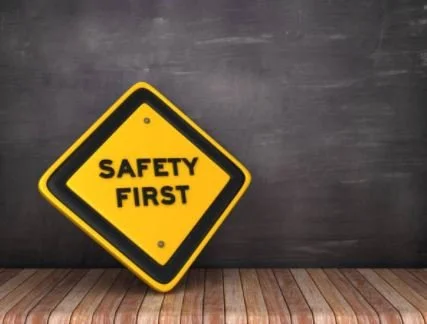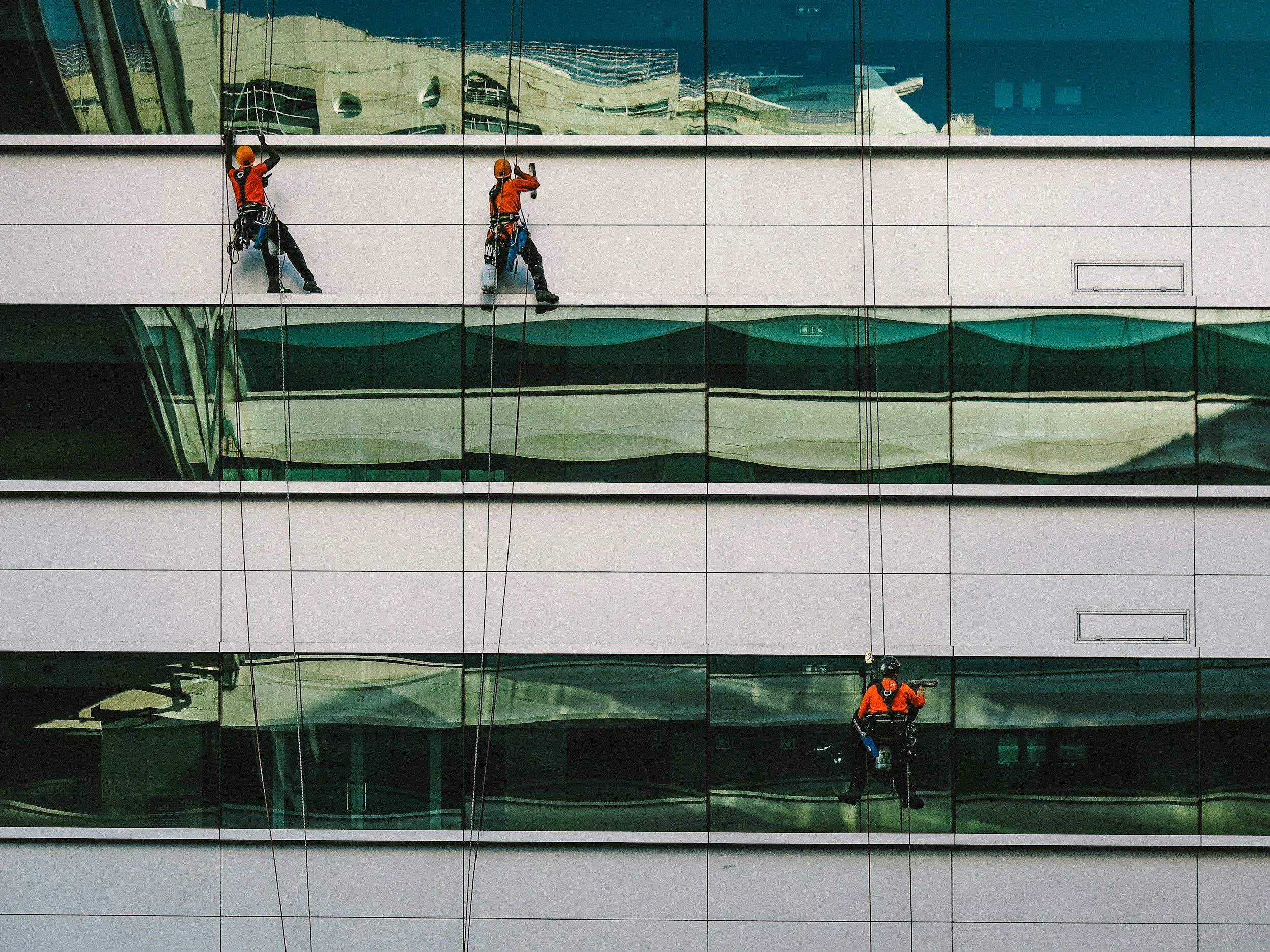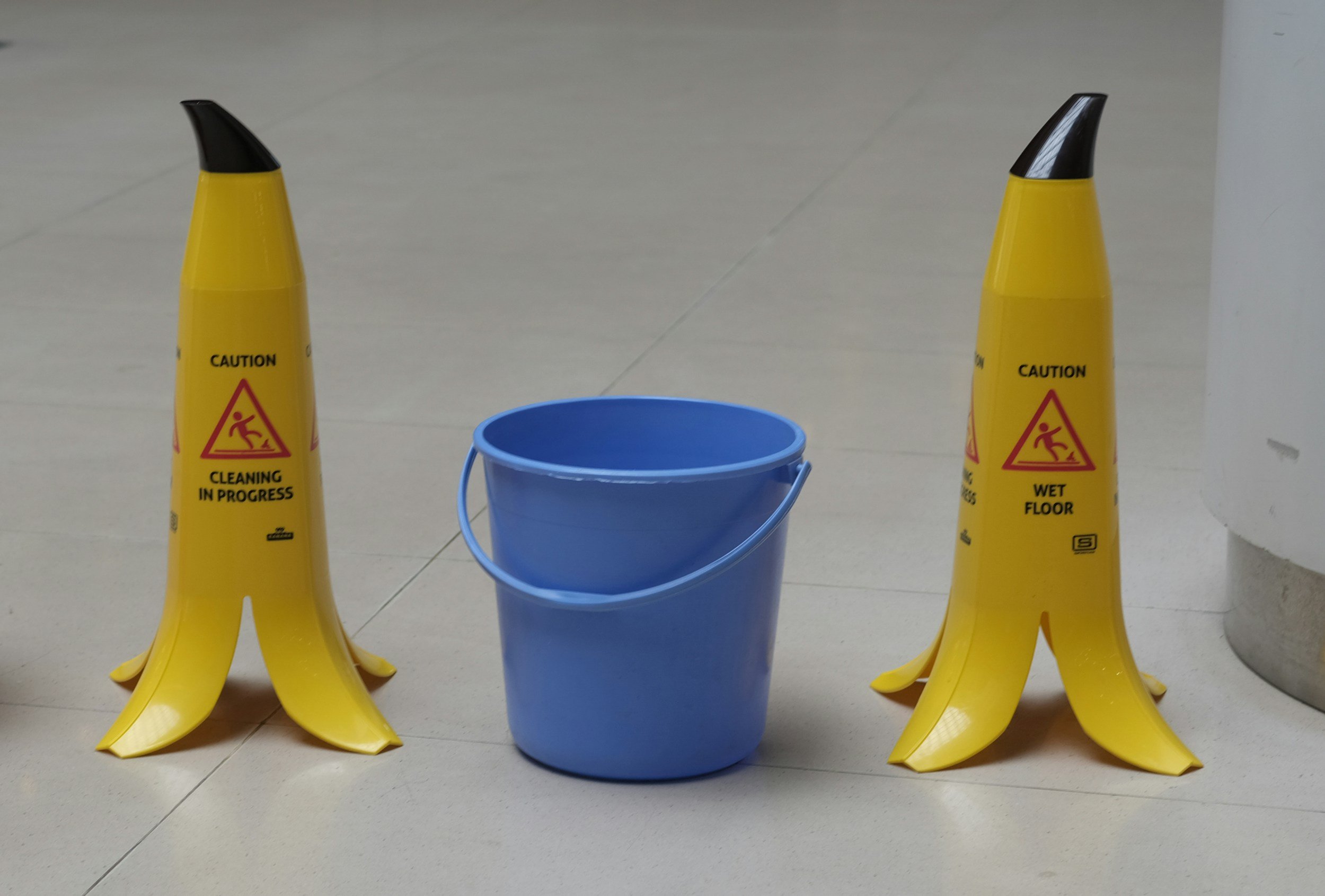No matter if you or someone else is responsible for implementing a safeguard, safeguards should be verified that they are in place prior to beginning work….
Read MoreWith all of the moving equipment, flying debris, and falling objects on a construction site it can be a very dangerous place for an individual on the ground. It is important to understand the specific hazards of the work for that day as well as the job site overall as ground personnel who will be on the job site. Furthermore, everyone needs to work together to eliminate or mitigate the hazards that result in struck-by incidents.
Read MoreIf you are required to repair or maintain any machinery or equipment, or any electrical power source, start the job by locking out and tagging out all energy sources and starting mechanisms. Locking or tagging out is the only sure way to prevent other employees from accidentally activating the system.
Read MoreTo you, the flagger:
You have been chosen as a traffic flagger because your supervisor feels you are physically able,
mentally alert, and sufficiently commanding in appearance to be obeyed by the motoring public.
You are an indispensable part of all maintenance and construction operations. We want you to
study the following instructions so that they become second nature. Your life, the lives of your
fellow workers, and the lives of highway users depend upon your alertness and on your ability to
control traffic with your stop-slow sign paddle.
Read MoreLMK Pipe Renewal facilities on state highway right of ways are to be maintained in a manner
satisfactory to the State of Florida and at LMK Pipe Renewal expense.
Read MoreFrequent and abrupt changes in geometries that require rapid maneuvers (such as lane narrowing,
dropped lanes, or main roadway transitions) should be avoided. Provisions should be made for
the safe operation of work vehicles, particularly on high-speed, high-volume roadways.
Read MoreAny member of the crew who serves as a flagger should be equipped with a Stop-Slow paddle and a reflective vest. Crewmembers shall be trained for proper flagging procedures.
Read More
All requirements pertaining to the safety, employees in the above listed publications are included in this Safety Manual by reference. In this Safety Manual, it is not practical to prescribe detailed requirements for all situations that may arise; therefore, it is the responsibility of individual employees to determine applicability of the aforementioned publications to their own activities.
Read More
Companies that hold general housekeeping of work areas to a high standard usually have a better safety culture than those companies that do not. Housekeeping is an important part of a robust safety program. Poor housekeeping promotes inefficiency as well as leads to injuries and property loss.
Read MoreAn important but often overlooked aspect of safety is what we decide to wear each day on the job….
Read MoreAllergies are an issue that many people have to pay attention to every day both on and off the job. There are many sources of allergens that can cause an allergic reaction. Common allergens include pollen, dust mites, food, drugs, latex, animal dander, insect stings, and mold. A few of these allergens may be an issue while on the job. It is important to know what you are allergic to as well as communicating it to others in case of an exposure resulting in an emergency situation. In this safety talk, we will discuss two common allergens that could be the source of a severe allergic reaction on the job.
Read MoreSlips, trips, and falls are one of the leading causes of injuries and fatalities in the workplace. According to OSHA, slip, trip, and fall incidents cause 15% of all accidental deaths and are second only to motor vehicle incidents as a cause of fatalities on the job. These types of incidents can result in life-changing injuries to the employees who suffer them. These incidents are also very costly for businesses. HUB reports that the average slip and fall injury costs $20,000.
Read MoreThere has been much discussion about silica dust in the past few years. OSHA has issued a regulation to help protect workers from overexposure to this dust. It has been largely unregulated in the past, and because of this, many workers have been faced with overexposure to silica dust. The CDC reports that an estimated 1.7 million U.S. workers are exposed to silica dust on the job.
Read MoreFire Hazards
If a fire breaks out in a LMK facility and it cannot be immediately and completely extinguished, you should follow the Emergency Reporting Procedures listed below.
Read More
The following is a list of the safety equipment that should be worn and/or used by all employees working in sewer manholes at all times, unless stated otherwise.
Read MoreThe following are the proper procedures and general safety precautions that will be followed
before entering a manhole for the purpose of taking flow measurements, performing inspections
or making sewer repairs:
Read MoreThe construction of sewers should be in accordance with standard design, with special attention
to self-cleaning velocities, good alignment, proper spacing of manholes, and adequate provision
for ventilation. These design standards when followed, will provide for a safer work
environment. However, there are several other points of safety that are of major importance.
Read MoreThree-way communication can be critical in verifying a message is understood during a work task which can make all the difference in whether a worker is injured or not….
Read MoreMosquitos are responsible for more human deaths every single year than any other insect or animal. According to Bill Gate’s website gatenotes.com, mosquitos are responsible for over 725,000 deaths a year. That number of deaths is more than the deaths caused by humans, dogs, snakes, roundworms, tapeworms, crocodiles, hippos, elephants, lions, wolves, and sharks combined on an annual basis.
Read More



















